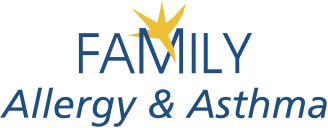Indoor Allergy
People with indoor/dust allergies often suffer the most inside their own homes or in other people’s homes. Oddly enough, their symptoms often worsen during or immediately after vacuuming, sweeping and dusting. The process of cleaning can stir up dust particles, making them easier to inhale.
Common Allergy Symptoms
- Sinus Congestion
- Runny Nose
- Post Nasal Drip
- Sneezing
- Coughing
- Itchy or Watery Eyes
Indoor Allergy Triggers
Dust mites. Dust mites—sometimes called bed mites—are the most common cause of allergy from house dust. Dust mites live and multiply easily in warm, humid places. They prefer temperatures at or above 70 degrees Fahrenheit with humidity of 75 to 80 percent. They die when the humidity falls below 50 percent. They are not usually found in dry climates.
Dust mite particles are often found in pillows, mattresses, carpeting and upholstered furniture. They float into the air when anyone vacuums, walks on a carpet or disturbs bedding and they settle once the disturbance is over.
Dust mites are a common cause of asthma in children.
A house does not need to be visibly dirty to trigger a dust mite allergy reaction. The particles are too tiny to be seen and often cannot be removed using normal cleaning procedures. In fact, a vigorous cleaning can make an allergic person’s symptoms worse.
Cockroaches. Cockroaches live in all types of buildings and neighborhoods. Some people develop allergy symptoms when they are around cockroaches. Tiny particles from the cockroach are a common component of household dust and may be the true cause of a dust allergy.
Mold. Mold is a fungus that makes spores that float in the air. When people with a mold allergy inhale the spores, they get allergy symptoms. There are many different kinds of mold—some kinds you can see, others you can’t.
Molds live everywhere—on logs and fallen leaves, and in moist places like bathrooms and kitchens. Tiny mold particles and spores are a common component of household dust and may be the true cause of a dust allergy.
Pollen. Pollen comes from trees, grasses, flowers, and weeds. People can be allergic to different types of pollen. For instance, some people are allergic to pollen from only beech trees; others are allergic to pollen from only certain kinds of grasses. Pollen is a common component of household dust and may be the true cause of a dust allergy.
Animal hair, fur, and feathers. Pets can cause problems for allergic patients in several ways. Their dander (skin flakes), saliva and urine can cause an allergic reaction, especially when combined with household dust. In households with birds, feathers and bird droppings can also become embedded in household dust and cause problems for people who are allergic to them.
Tips to Manage Indoor Allergies
It’s best to avoid the things most likely to cause an allergic reaction. Here are some simple steps to reduce exposure to indoor dust:
- Opt for wood flooring over wall-to-wall carpets when possible, especially in bedrooms.
- Clean your house regularly, using a central vacuum or a vacuum with a HEPA filter. If you are allergic, wear an N95 filter mask while dusting, sweeping or vacuuming. (It can take more than two hours for the dust to settle after a thorough cleaning—so, if possible, clean when the allergic patient is away, and avoid cleaning the bedroom of an allergic person at night.)
- Use “mite-proof” cases on your mattresses and pillows. Wash all bed linens regularly, using hot water.
- Keep a HEPA air cleaner running in the allergic person’s bedroom.
- Keep pets out of the allergic person’s bedroom at all times.
- Install a high-efficiency media filter with a MERV rating of 11 or 12 in the furnace and the air conditioning unit. Leave the fan on to create a “whole house” air filter that removes particulates. Change the filter at least every three months (with the change of the seasons) to keep the air clean year-round. Have your heating and air conditioning units inspected and serviced every six months.
Don’t suffer from untreated allergies. Schedule an appointment today with one of our board-certified allergists, and move towards a clearer tomorrow.
